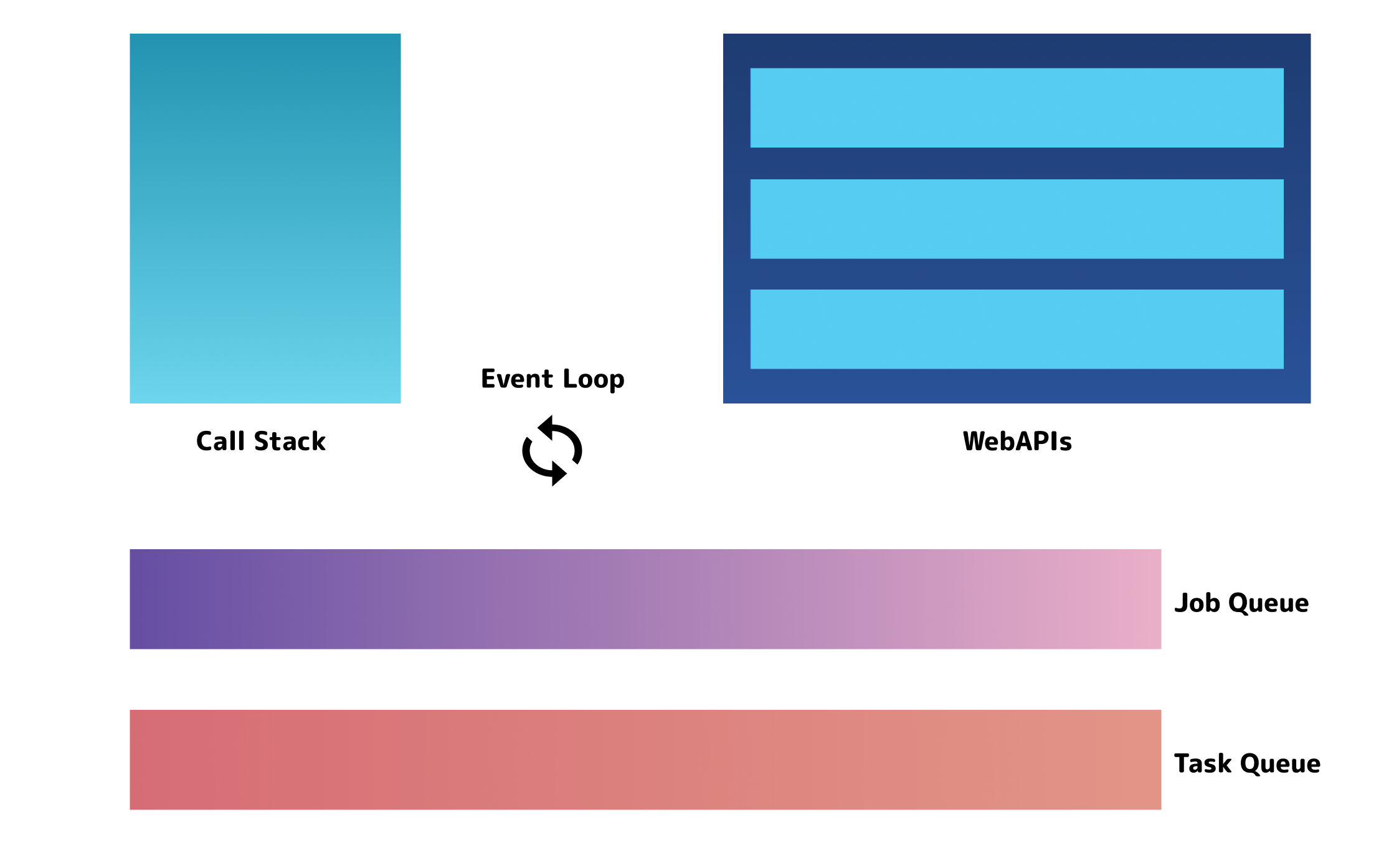
JavaScript Concurrency Model
JavaScript is a single threaded programming language. This means that only one piece of code can run at a time, on a single main thread, and everything else is blocked until an operation completes.
But we don’t want to wait or get blocked for a certain asynchronous task to complete! Imagine scrolling through Instagram and not able to actually scroll until a particular feed is loaded completely. That would be really awful!
Luckily, JavaScript is a non-blocking language, and this article is all about how things work under the hood.
Table of Contents
- Execution Context
- Call Stack
- Task Queue
- Job Queue
- Event loop — How it all works together!
Execution Context
Before we get into how JavaScript handles asynchronous tasks, one should know how exactly JavaScript code executes.
Execution context_ is an abstract concept that holds information about the environment within which the current code is being executed._
- Whenever a JavaScript file loads in the browser for the first time, a global execution context is created.
- Every-time we call/invoke a function, a new execution context gets created.
- When we return out from a function OR function body is completely executed, the execution context of that function is destroyed and garbage collected.
Basically, 2 things happen(simultaneously) whenever a JavaScript code is executed in a given execution context —
- Threading - JavaScript thread executes each line of code one at a time in a procedural manner.
- Memory - JavaScript creates new labels and store in memory, all the variable/function declarations for a given execution context
#coding #js #asynchronous #javascript #concurrency #programming
